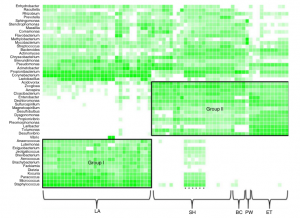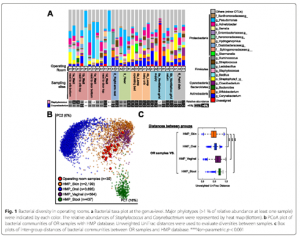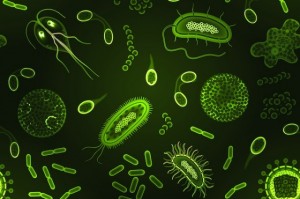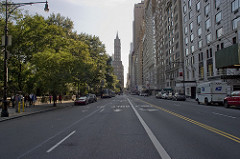Introduction In 2013-2014, a metagenomics project called “Pathomap” collected 1,457 swab samples from the surfaces of all active subway stations throughout New York City (NYC), as well as samples from the Gowanus Canal and several parks. Each sample was sequenced to an average depth of 3.6 million reads (paired-end 125 nucleotides), generating a city-wide metagenomic …
A review by Maddox et al came out earlier this year on antimicrobial resistance in horses. Livestock are a common source of antimicrobial resistance genes since so many antimicrobials are used on a regular basis to raise these animals. Too slowly, laws are coming into place restricting antimicrobial use in livestock so that only when animals are …
Designers Martin Krzywinski and Barbara Jeannie Hunnicutt provide a peek behind the scenes, and explain how they developed a data visualization based on bacterial genome information derived from dust. Source: The Evolution of a Scientific American Infographic: Secret Life in Household Dust – Scientific American Blog Network This is an absolutely fascinating look behind the …
Autumn is not just a beautiful season in which multicolored leaves fall to the ground from their branches. It is also a good time for all kinds of microbes to flourish with the new addition of delicious leaf litter nutrients. A new paper from Irga et al studies the connection between the fungi found on leaf litter and …
As buildings move forward in an attempt to become more “green,” it is important to continue to assess how the microbiology changes with these new systems. A recent study from Keely et al used high-throughput pyrosequencing to look at what microbes live in the different points in grey water systems. The sampling efforts were split into …
Infants born via c-section have a microbiome community composed mostly of skin bacteria [1-3], but the source of these skin bacteria is unknown. People quickly shed bacteria into their environment, leaving their own bacterial signature in a room within hours [4]. Do hospital operating rooms harbor skin bacteria that could colonize c-section delivered infants? A …
New papers on microbes in water treatment plants and pipes. Microbes in pipes Revealing the microbial community structure of clogging materials in dewatering wells differing in physico-chemical parameters in an open-cast mining area – Juanjuan Wang – Water Research Iron rich deposits cause clogging the pumps and pipes of dewatering wells in open-cast mines, interfering …
Time for an update with recent papers on the microbes of the built environment. I have many, so I will break them up into two different posts. Microbes in buildings Microbial Density on Electronic Devices – Sulan Kith – Int.J.Curr.Microbiol.App.Sci Human participants each used an tablet, smart phone and media player for 20 minutes. We predicted that microbial density would …
(This is a guest post by Jordan Peccia at Yale University) After a six-month period of home recruitment, surface and aerosol sampling campaigns have begun in an Alfred P. Sloan Foundation indoor microbiome sponsored project awarded to Tulsa and Yale Universities. The goal of this proposed research is to explore how two central and modifiable …
A new paper just came out from Dunn et al about how urban stress effects microbial communities in Manhattan. Urban structures can provide barriers to species movement and create islands of life, both for macro- and microscopic creatures. Here, they sampled soil bacterial and fungal species, as well as ant communities, from small road medians and large …





